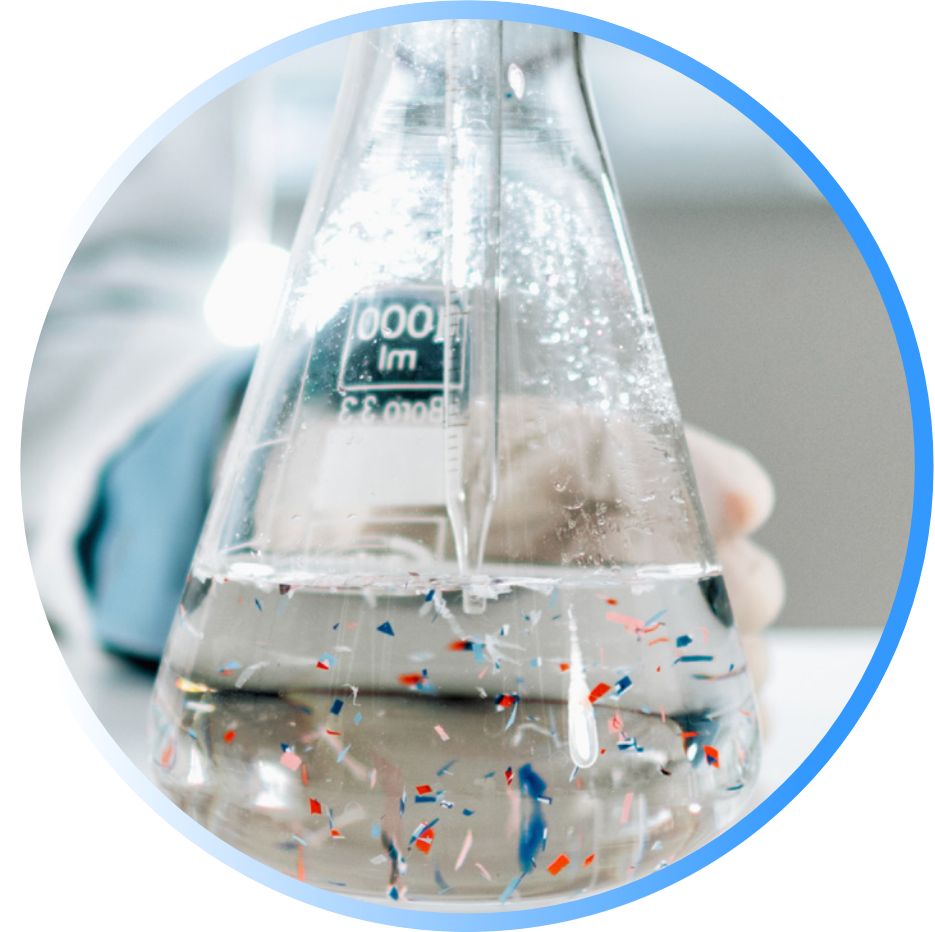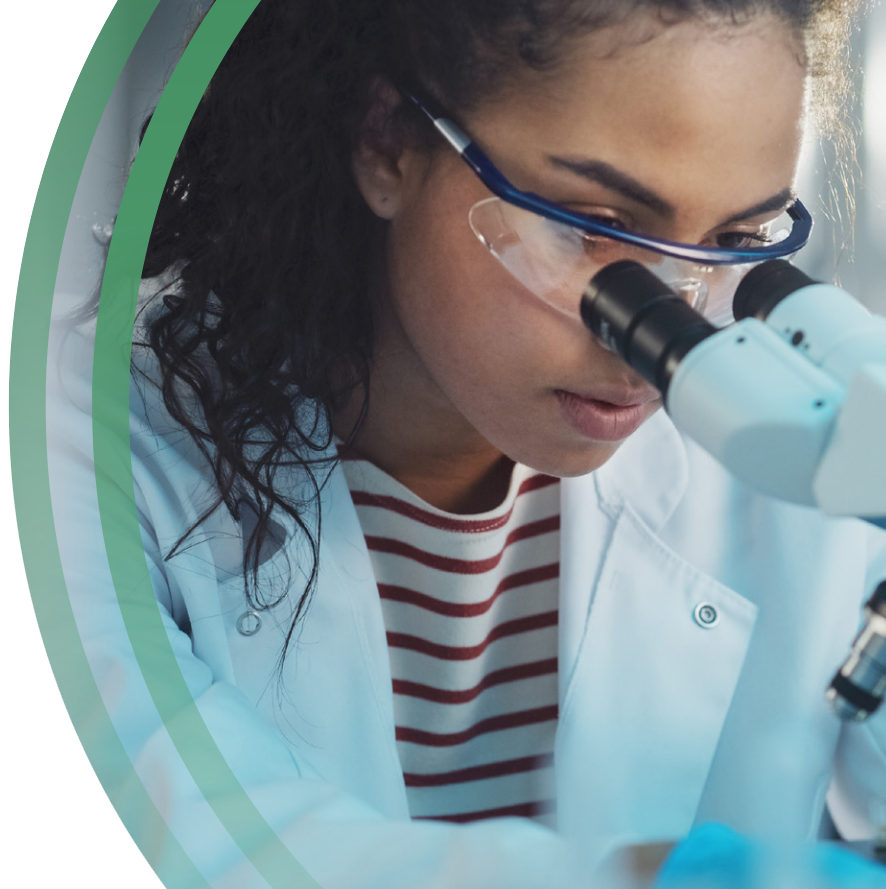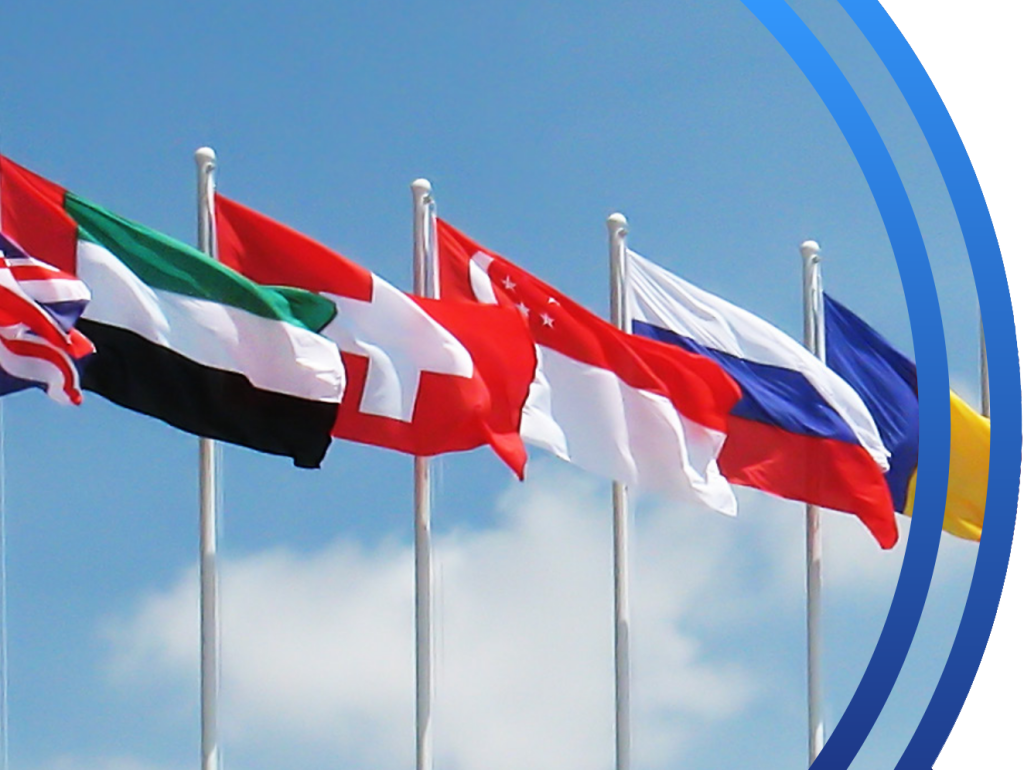
MICROPLASTICS: COMMON QUESTIONS & RESEARCH UNDERWAY


A global agreement on plastics should help enable a circular economy, which can minimize the flow of plastic waste – including microplastics – into our environment.

What are microplastics?
Microplastics are plastic particles, generally considered a subset of plastic debris, characterized by size: from 5 millimeters (mm) down to the nanometer range.
Microplastics are often categorized as primary or secondary. Primary microplastics refer to intentionally produced plastic materials, such as plastic pellets sold to companies across the globe. Some are intentionally added to a range of products to enhance function or require fewer active ingredients, including fertilizers, crop protection products and advanced drug delivery systems.
Secondary microplastics result from the degradation of larger plastic materials.
Although there is a general interpretation of microplastics, the adoption of a single definition of microplastics – developed by ASTM and ISO organizations, for example – would help guide scientific research and public policy.
What are major sources of microplastics?
Existing studies have estimated that sources of secondary microplastics (degradation of larger plastic materials) create the vast majority of microplastics. Vehicle tires, road wear and synthetic textiles are generally thought to be large sources of microplastics, followed by mismanaged waste, city dust, road markings, marine coatings, fishing nets and litter.
Primary microplastics are often subject to public policies and/or voluntary programs that help manage or eliminate them, typically in developed countries. Primary microplastics represent a small percentage of microplastics, although they still need to be addressed (see below).


What are concerns regarding microplastic?
Microplastics have been detected in our environment and in animals and humans. This has raised questions over their potential effects on our environment and health. Scientists are conducting research to help answer these questions about risk.

What’s the state of the science on microplastics?
Scientists have been studying microplastics for about a decade, and data gaps exist. Research on microplastics is challenging due to a lack of standardized materials and research methods used by the scientific community, as well as the complex nature of microplastics in our environment.
Have scientific/regulatory bodies assessed microplastics?

The World Health Organization (WHO) used independent experts to systematically review the concerns over microplastics in drinking water (published in a 2019 report) and through ingestion and inhalation (published in a 2022 report). The WHO and U.S. Food and Drug Administration (FDA) have emphasized the need to advance the science on microplastics, and have stated the following on the impacts of microplastics across different exposure pathways:

Drinking water
“Based on the limited evidence available, chemicals and microbial pathogens associated with microplastics in drinking-water pose a low concern for human health.” (WHO 2019 report)

Ingestion
“The weight of the scientific evidence provided by current data on adverse effects of [microplastics] on human health is low, because of substantial limitations of the available information.” (WHO 2022 report)
“Current scientific evidence does not demonstrate that levels of microplastics or nanoplastics detected in foods pose a risk to human health.” (FDA, 2024)

Inhalation
“The assessment scores indicated that the available data are of only very limited use for assessing the risk of [microplastics] to human health.” (WHO 2022 report)
The Science Advice for Policy by European Academies (SAPEA) reached a similar conclusion in 2019:

“…exposure to microplastics in the laboratory has a significant, negative effect on food consumption, growth, reproduction and survival, once effect thresholds are exceeded. But we have no evidence that this happens in nature, and a lack of data to say whether individuals shown to contain plastics in nature are affected.”

“…there is a need for improved quality and international harmonisation of the methods used to assess exposure; fates and effects of [microplastics] on biota and humans.”
Additional systematic reviews conducted by multiple regulatory agencies have reached similar conclusions. Data on the toxicity of microplastics are not definitive, and further information is necessary to determine the potential exposures, hazards and risks of microplastics to our environment and health.
As such, regulatory bodies have recommended additional research on the topic.
What research is needed?
Significant research is needed to improve our understanding of the sources of and exposure to microplastics, as well as to identify any potential associated hazards and risks. Additional research is also needed to identify the best practices for conducting microplastics research, including development of robust methods and materials to use for (eco)toxicological testing. With improved scientific understanding, industry and regulators would be able to conduct risk assessments of various microplastics and determine if steps are necessary to mitigate risk.

How has industry responded?
Since 2021 the global chemical and plastics industry has committed nearly $15 million over five years to fund independent research, with more than $11 million already designated to academic institutions across the globe. This research is developing the missing tools and methods necessary to measure the potential hazards and exposures of microplastics. The results of the research will help countries and regions to make risk-based policy decisions. To learn more about the research projects, visit plasticscircularity.org/microplastics.
This research will help meet WHO’s call for more robust science in its 2022 report:

“It is generally recommended that standard methods be developed and adopted to ensure that the research community can reduce uncertainties, strengthen overall scientific understanding and provide more robust data for assessing the risks of exposure to [microplastics] to humans.”

“Standard methods should be developed to improve the quality and reliability of data from both environmental monitoring and studies of effects. Researchers should ensure that studies on the sources and occurrence of [microplastics] in air, water, food and beverages are based on appropriately designed, quality-controlled protocols.”

MARII
This ongoing research is being shared among academic, regulatory and industry scientists under the Microplastics Advanced Research and Innovation Initiative. MARII is a platform launched by the International Council of Chemical Associations (ICCA) “to facilitate the global exchange of information on microplastics research projects and related scientific conferences and activities.” It’s designed to “develop collaborations and leverage resources to develop data to inform the risk assessment of microplastics.”
Product Stewardship
In addition to research, plastic makers are taking action to prevent plastic pellets from entering the environment.
One of the mechanisms to help prevent pellet loss is Operation Clean Sweep® (OCS), a program that supports work towards the goal of zero plastic pellet loss. OCS promotes awareness and use of good housekeeping and plastic pellet containment practices and has been adopted in thousands of facilities around the globe. The program drives improvement through facility risk assessment, information sharing, employee engagement and training. The program’s widespread adoption has increased industry awareness and efforts to prevent pellet loss around the globe.
The Global Partners for Plastics Circularity strongly
encourage companies throughout the plastic value chain
– anyone who makes, ships, handles or uses plastic – to
participate in OCS.

How can a global agreement help?
A global agreement on plastics can help enable a circular economy, which can minimize the flow of plastic waste – including microplastics – into our environment. A global agreement can also facilitate collaboration across countries, regions, and stakeholders to accelerate progress in the science of microplastics.
As WHO notes in its 2022 report:

“Although the limited data provide little evidence that [microplastics] have adverse effects in humans, there is increasing public awareness and an overwhelming consensus among all stakeholders that plastics do not belong in the environment, and measures should be taken to mitigate exposure to [microplastics].”

“To ensure substantial reductions in the release of [microplastics] from plastic products used in commerce,” WHO recommends “better management of plastics throughout their product life-cycle,” “innovations in waste treatment” and “innovations in materials science,” among other measures.
These measures are included in the ambition of the Global Partners for Plastic Circularity.
In addition, the Global Partners for Plastics Circularity support inclusion of language in the global agreement that mandates participation in a certified program to help prevent plastic materials throughout the value chain from entering the environment.


A global agreement on plastics should help enable a circular economy, which can minimize the flow of plastic waste – including microplastics – into our environment.
Championing a global agreement for a sustainable, circular economy.
